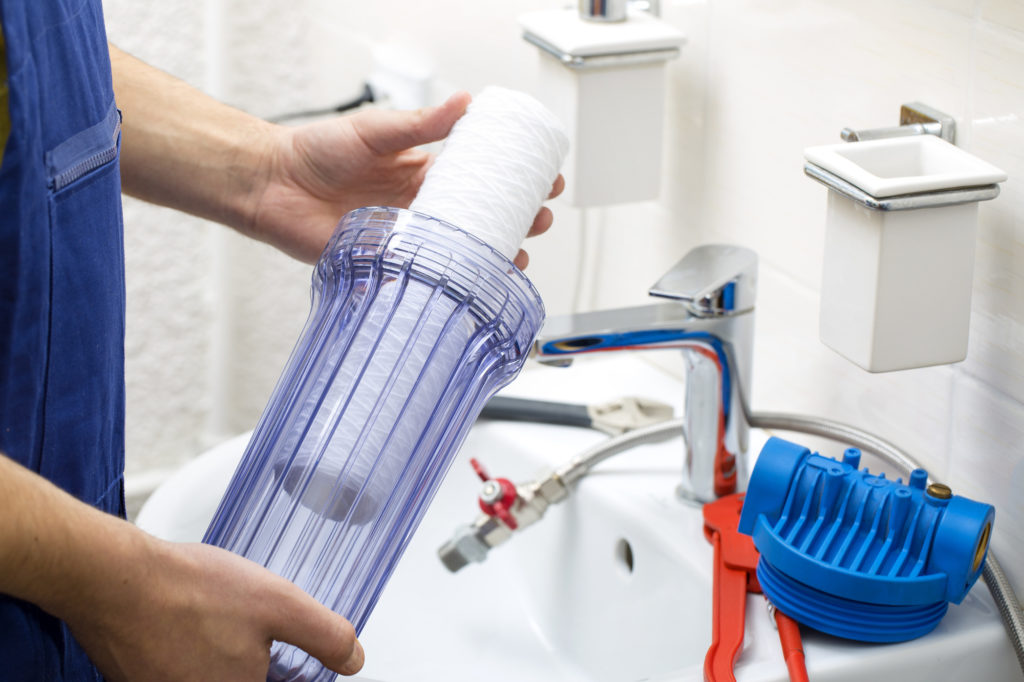
Tap water used to be an unquestionable source of clean water. For many parts of the country, this crucial element of human survival is compromised. In fact, half the world’s population will be subject to reduced water security by 2025.
Even if you aren’t living in a water-stressed area, tap water can collect many contaminants. Old pipes and reservoirs can hold bacteria, viruses, chlorine, lead, pesticides, or benzine. There are too many variables that can affect the quality of water before it gets to you.
Water filtration systems have become more of a commonplace over the years. Affordability and accessibility have empowered consumers’ water choices. For more information on how water filters work and how to purify water, keep reading.
The Search for Clean Water
While some residents have no choice but to invest in their own specialize water filters, the average person doesn’t. Your average tap water could have a variety of contaminants at various concentrations. Installing incorrect or unnecessary filters is a common issue with water filtration purchases.
You should have good foundation for understanding what type of water filtration system you need. You can get it from your water’s Consumer Confidence Report. This is a free report you can request, but you should receive it annually in the mail. This report will contain all the important mandated testing results on your water.
Knowing the levels of various contaminants, a water filtration service can provide generalized recommendations. For more personalized filtration needs, you’ll need to get your water tested from the tap. It’s recommended you get an EPA-certified lab to run your tests.
Well, owners should get this kind of test done on a yearly basis to stay on top of pesticides and possible leaching of chemicals.
The Best Water Filter Solution
When shopping for water filtration systems, the choices can seem endless. You have simple plastic pitchers with filter attachments, filters for refrigerators, faucets, and entire home solutions. Each one with its own set of pros and cons.
When your tap water isn’t on the extreme end of contamination, a Brita pitcher or faucet attachment may suffice. If you have concerns about chemicals, heavy metals, or pesticides, you may need something more comprehensive.
Remember, even if your water is safe to drink, it might not be good for your skin and clothes. Plus, standard consumer filters won’t be able to handle things like iron contamination. Only a specialized iron filtration system will work.
Common Chlorine Dangers
It is worth noting that chlorine often goes undetected in the annual government reports. This is something you’ll have to investigate with your utility company or conduct via 3rd party tests. Chlorine is a highly volatile contaminant that has been connected to neurological and pulmonary illness.
Ingestion and long-term physical contact with high levels of chlorine can lead to various cancers and diseases. Thankfully, there are highly-effective filters that can absorb and remove chlorine, similar to a pool’s filter. Regular carbon filters cannot achieve this, it must be a catalytic carbon filter.
Those who have more than one type of contaminant they are concerned with will be happy to hear there are multi-stage filters. These are applicable to both entire home filtration systems as well as individual filters for faucets and fridges.
NSF Safety Testing
Water specialists suggest searching for a water system guaranteed by NSF International. They are a philanthropic association that does testing for the public and water corporations. NSF tests water filtration systems to guarantee that they both meet NSF wellbeing models and are viable.
They must be able to clean contaminants as advertised. Financiers Laboratories and the Water Quality Association likewise offer comparative tests, in light of NSF benchmarks. Many water filtration companies will get certified by multiple labs.
NSF has diverse qualifications, so when you read the tag, ensure it says the filtration system will expel the contaminants you need it to. A water filtration system affirmed by NSF to clean chlorine won’t be useful in the event that you require it to filter nitrates.
Search for the NSF seal, Underwriters Laboratories’ “UL Water Quality” check, or the Water Quality Association Gold Seal for more confirmation that your product will really do what the company claims.
Water Treatment Methods
As we previously mentioned, water treatment for the home is accomplished via household systems and after the tap. These methods are also referred to as point-of-use and point-of-entry systems. Public water treatment can involve one or more of the following:
Filtration
Accomplished via one or more of these types of filters:
- Chlorine
- NaDCC
- Iodine
- Membrane Filtration
- Chlorine Dioxide
- Reverse Osmosis
- Ultraviolet
Water Softeners
Hard water is water that contains a high concentration of water-soluble minerals. These water softeners usually consist of potassium or sodium to break up calcium and magnesium ions. Hard water is responsible for the white film that forms on shower tiles and pools.
Water softeners increase the longevity of appliances and reduce dry skin and hair from showering. Hard water can also reduce the number of plumbing issues you have. Scaling and mineral deposits over years can lead to pipes clogging and bursting.
Distillation
Distilled water can be commonly found on store shelves. This water contains zero impurities, making it suitable for scientific and medical use. Water is distilled by boiling and collecting water vapor, leaving all solid contaminants behind.
Distillation can remove nitrates, barium, copper, and other harmful contaminants that can cause serious illnesses like high blood pressure, Alzheimer’s, and child birth defects.
Disinfection
Disinfecting surfaces with chemicals kill bacteria and viruses. Disinfecting water does the same, but with heat, UV radiation, or heat. If your home water was contaminated with microorganisms, disinfection would be necessary along with filtration.
Additional Considerations
Water systems that work on electricity, filtration membrane, or ultraviolet light have one setback. The ability to disinfect via these systems relies on running water and not on stored water. This can be an important caveat for those who use rain or collected water.
As you see, there are a number of methods to purify water. A multi-faceted approach is needed to eliminate all contaminants from water. You can’t simply distill water and remove everything, just as you can’t just pour water through a common filter and guarantee safety.
Professional water filtration systems are necessary for understanding your needs and eliminating waste. Upkeep of said filters must also be accounted for to maintain maximum protection.
Improving Water for the Future
Nothing is 100%, that’s why you’ll never see a filter service or product promise it. If your filtering needs aren’t based on documented dangers, only paranoia, they can be costly. Still, when you contrast discarding a few cartridges with the billions of water bottles we waste every year, you wind up on top.
Water filtration systems can provide peace of mind, a reduced carbon footprint, and a step towards a more water-secure future. We have to request that organizations reclaim and reuse their cartridges. Other than spending assets, water cartridges trap and hold contaminants.
When the cartridges are not discarded in a proper reclamation landfill, those contaminants could wind up appropriate back in the earth. Ultimately, those contaminants could end up in someone else’s water supply. That’s like running in place.
Unsuspecting, beautiful neighborhoods, like Knoxville Tennesse, often struggle with contaminated water supplies all the time. It is up to us to be proactive, investigative and educated on whats in our water.
Present Day Obstacles
US water treatment and delivery frameworks go back quite a few decades. This aging infrastructure requires repairs and replacements to make water drinkable. While the EPA won’t comment on anything concrete, more cash is needed to make these overhauls.
For anyone living under a rock, the only thing known about the EPA right now is that budget cuts will continue. This is a problem that can only be solved by the people. This means individual and collective efforts to push the government to invest in safer water.
All our water utilities will utilize old, chemical-laden treatments well into the future. Our water systems may never improve, possibly dipping below acceptable in more cities. Assume liability for your family’s well-being via painstakingly considering whether you have to find a way to make your water the safest it can be.
More Home Improvement Ideas
Hopefully, this guide has provided a lot of insight as to what it takes to get clean water for your home. Sustaining off of water bottles is just not practical, nor is it fun to brush your teeth with. A simple Brita water filter can meet much of your drinking needs, but don’t ignore the risks associated with bathing in tainted water.
Check out our Health and Wellness blog for more guides like this. We update it daily and provide information on products, trends, common health problems, and medical advice from professionals.
Don’t just be curious, be informed at Curiosity Human.

